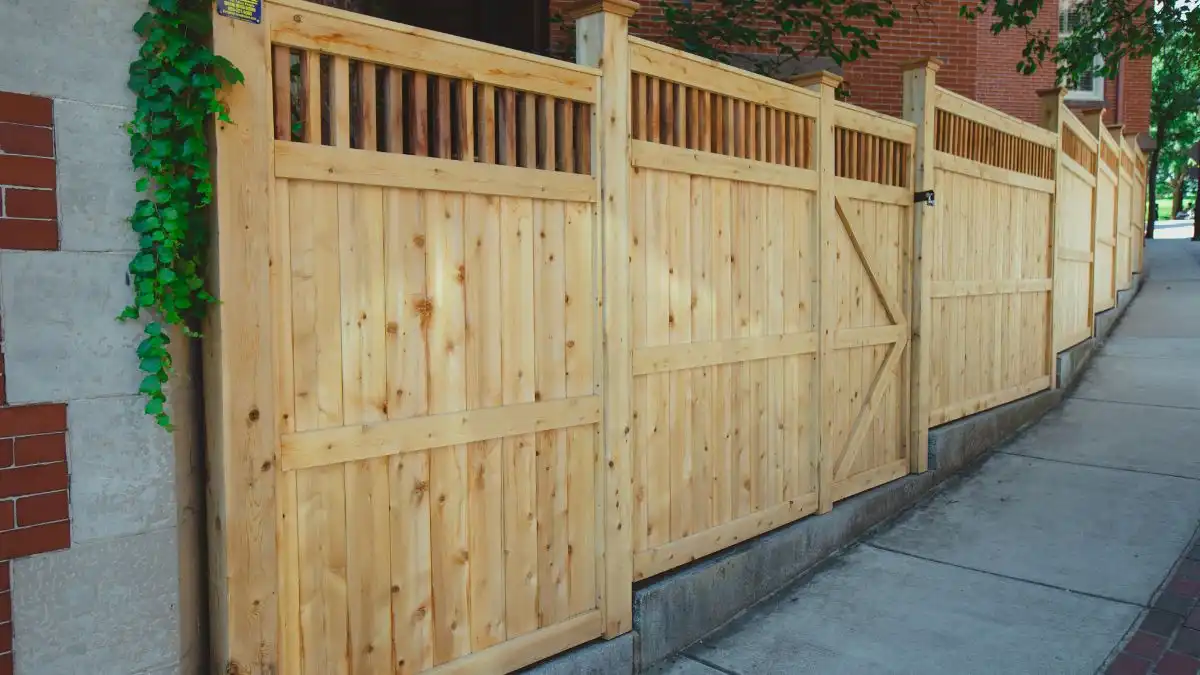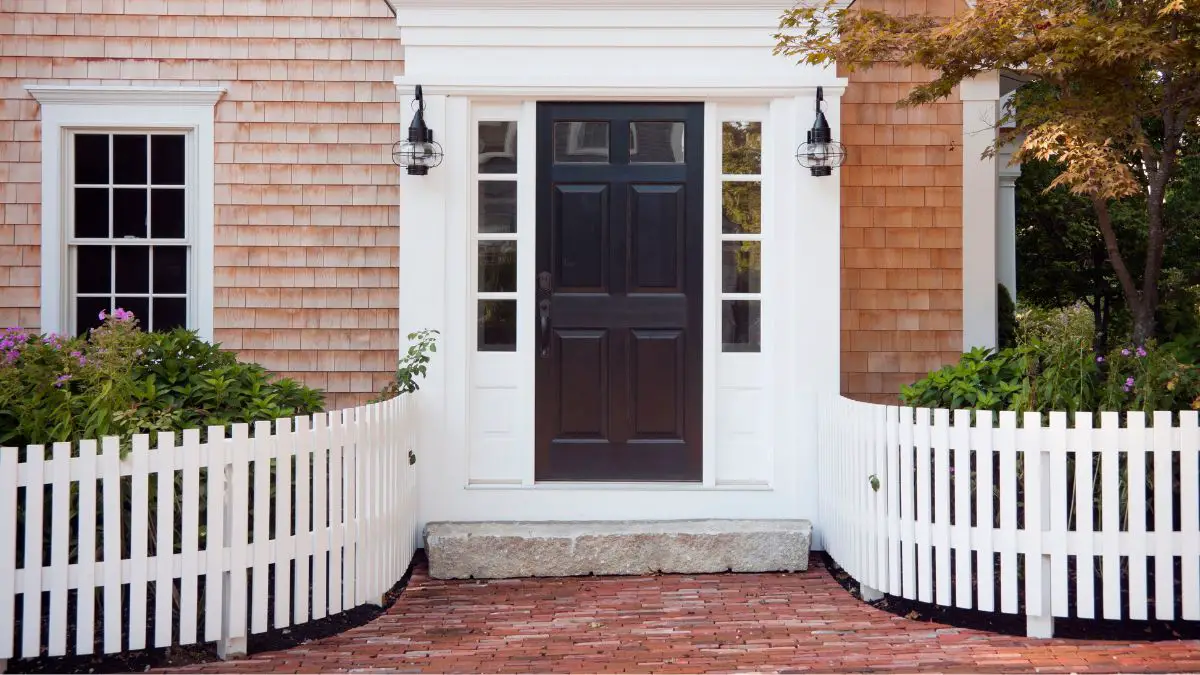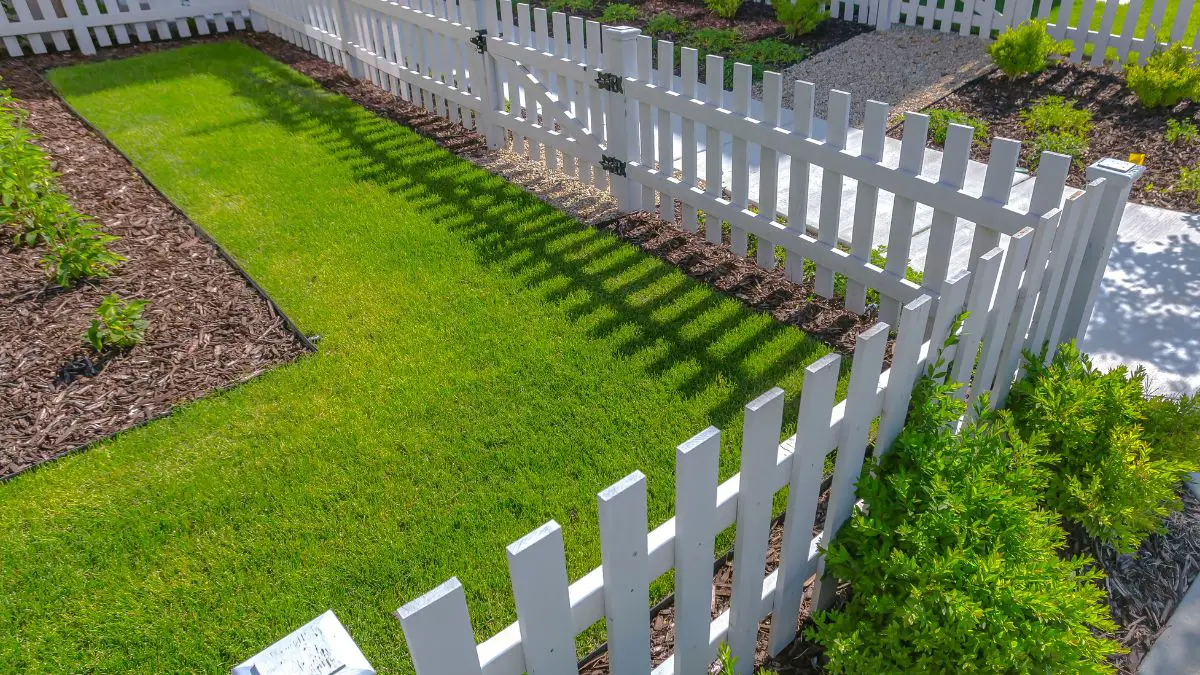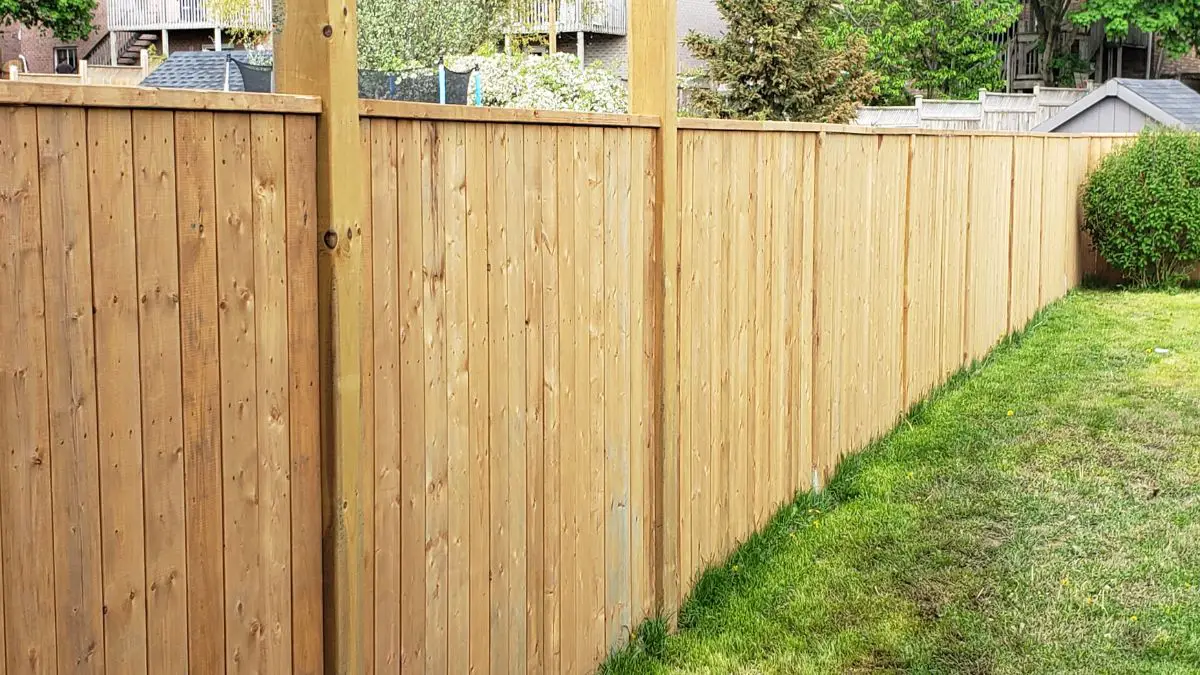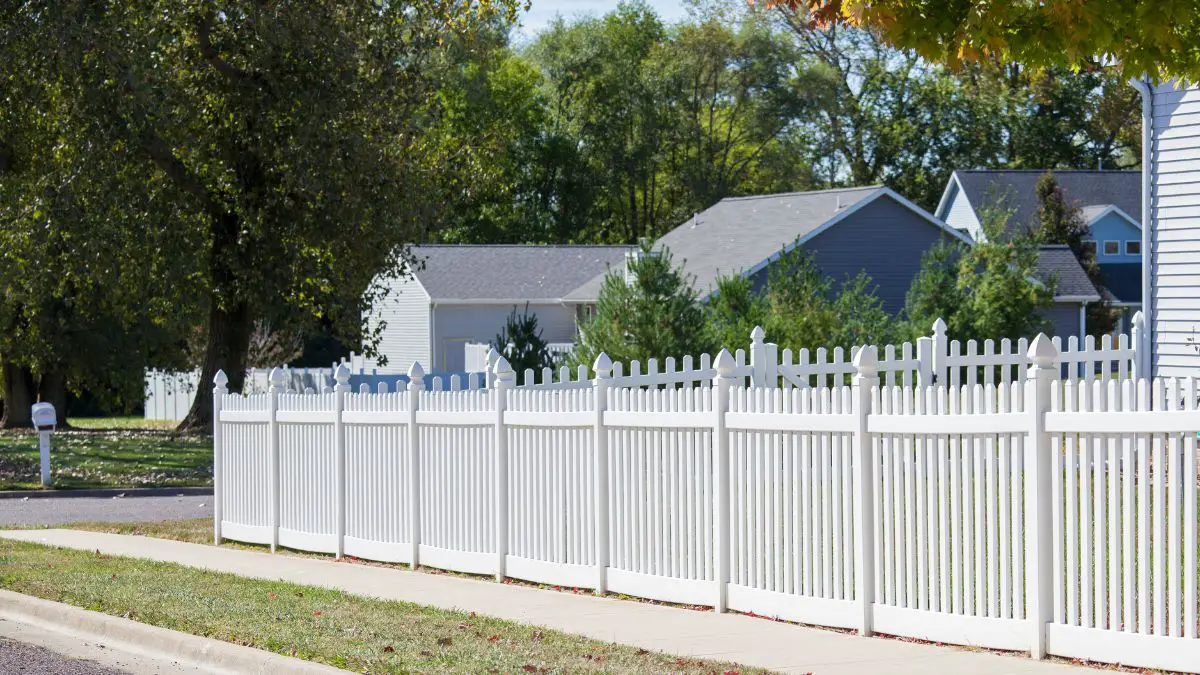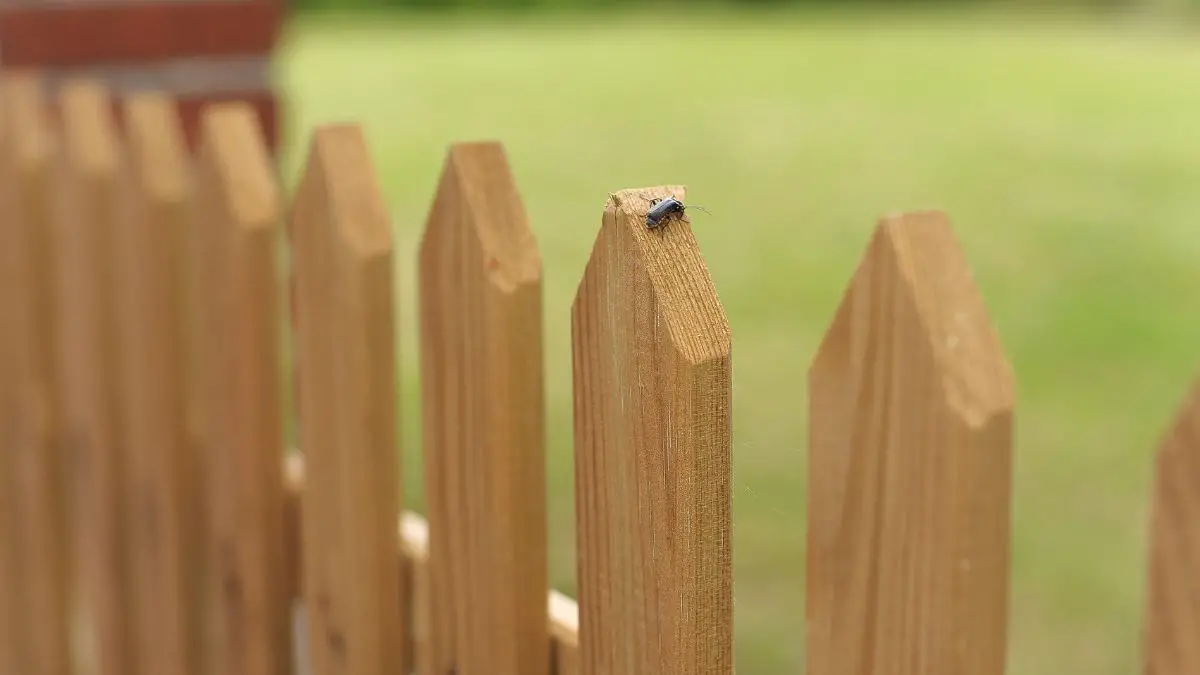Choosing the right wood for your fence is a decision that can significantly impact your property’s curb appeal, security, and maintenance requirements. You’re not just building a fence; you’re crafting a statement piece that adds value and character to your home. But with so many types of wood fences available, you might wonder, “What is The Best Wood for Fences?”
When choosing the best wood for your fence, consider cedar wood and redwood for their exceptional durability and natural resistance to rot and insects. Pine and spruce are affordable options on a limited budget, though they may require more maintenance. Cypress costs more but offers a unique aesthetic and is naturally insect-resistant.
Cedar and redwood, for instance, are renowned for their natural resistance to rot and insects, exceptional durability, and stunning beauty, making them excellent choices for lattice fences. These types of wood can last for decades with proper care, making them a long-lasting and attractive option for fences.
On the other hand, pine and spruce are more affordable options that still offer good durability, especially when pressure-treated wood. These types of wood are perfect for those on a tight budget but still want a beautiful, sturdy fence.
Get FREE quotes from local fence contractors in your area today. Whether you need wood, vinyl, or metal fencing - We Can Help! All Contractors are screened, licensed, and insured.
Types of Wood for Fences
You can use many popular wood species for building a fence. Here are some of the best wood species for fences.
Cedar Wood
You’re standing in your backyard, envisioning a beautiful cedar fence with Cedar Pickets. Cedar, a popular type choice for outdoor fencing, is known for its rich color and exceptional durability.
It’s a wood that naturally resists rot and insects, making it a prime choice for those who prefer low-maintenance materials.
Redwood
Imagine the elegance of a redwood fence gracing your property. Redwood fences are not just stunning; they’re also incredibly durable. Redwood lumber is naturally resistant to termites, decay, and other damaging insects, making it a top fencing choice.
A redwood fence can withstand harsh weather conditions and maintain its majestic beauty. It can be painted or stained to match the exterior of your home. If you want a durable and attractive yard fence, consider using redwood.
Douglas Fir
When selecting the ideal wood for fencing, Douglas Fir emerges as a popular and reliable choice among homeowners and builders alike. Known for its durability, affordability, and aesthetic appeal, Douglas Fir offers several advantages for various fencing applications.
Its dense nature and natural resistance to decay and rot make it highly resilient, allowing it to withstand adverse weather conditions and prolonged exposure to moisture. It can effectively resist warping, twisting, and splitting, ensuring your fence retains its shape and integrity over time.
Whether you’re planning to build a privacy fence, decorative fence, or picket fence, Douglas Fir adapts well to various fencing styles and designs. Its versatility complements contemporary and traditional homes.
Pine
Picture a charming pine type of wood fence surrounding your home. Pine is an affordable and readily available wood type, making it a popular choice for fencing.
Unlike Douglas Fir, pine is not as long-lasting or decay-resistant. It’s important to select quality lumber when building a pine fence and regularly inspect it for signs of splinters, cracks, and rot. In addition, because it is softer than other woods, such as redwood or cedar, it requires regular maintenance and staining to protect it from the elements.
Pressure-treated pine, in particular, offers increased durability and resistance to rot and pests. Pine fence posts can give your property a classic, rustic look while providing the privacy and security you need.
Spruce
Envision a sturdy spruce fence protecting your property. Spruce is a cost-effective choice for fencing, offering a pleasing aesthetic and reasonable durability.
While it may require more maintenance than other wood types, a well-cared-for spruce fence can last many years. Spruce is ideal for creating privacy fences and can be easily painted or stained to match your home’s exterior.
Cypress
Imagine the timeless beauty of a cypress fence in your yard. Cypress is a durable wood naturally resistant to insects, making it an excellent choice for fencing. Its distinctive color and straight grain pattern add a touch of sophistication to any property.
While cypress may be a bit more expensive than other types of wood, its longevity and low maintenance requirements make it a worthwhile investment.
Factors to Consider When Choosing the Best Wood for Fences
When selecting the perfect wood for your fence, durability and shorter lifespan are crucial factors. You want a fence that can stand the test of time, right?
Durability and Lifespan
Cedar and redwood, for instance, are known for their exceptional durability. These types of wood naturally resist decay and can last for decades with proper care.
On the other hand, pine and spruce, while more affordable, may not last as long but can still serve you well with the appropriate treatment and maintenance.
Remember, a durable fence isn’t just about longevity; it’s also about maintaining its aesthetic appeal over time. So, when choosing your wood, think about how it will age and whether it will continue to enhance your property’s appearance in the years to come.
Resistance to Rot and Insects
Another critical factor is the wood’s resistance to rot and insects. After all, you don’t want your beautiful fence falling prey to termites or quickly decaying.
Cedar and cypress are naturally resistant to insects and rot, making them excellent choices for fencing. These types of wood contain natural oils that repel insects and prevent decay. On the other hand, pine and spruce may require additional treatment to enhance their resistance to pests and rot.
When choosing your wood, consider your area’s climate and the common pests. This information can help you select the most resistant and suitable wood for your fence.
Maintenance Requirements
Lastly, consider the maintenance requirements of the wood you choose. You want a fence that looks good and is easy to maintain.
Cedar and redwood fences, for instance, require minimal maintenance. Their natural resistance to rot and insects means you won’t have to treat them as often. However, to maintain their color and prevent them from turning gray, you may need to seal them every few years.
On the other hand, pine and spruce fences may require more frequent treatment to prevent rot and insect damage. But with regular maintenance, these fences can remain beautiful and sturdy for many years.
Quick rundown of maintenance requirements for each wood type:
- Cedar: Requires sealing every few years to maintain color.
- Redwood: Minimal maintenance is required; sealing can help maintain color.
- Pine: Requires regular treatment to prevent rot and insect damage.
- Spruce: Requires regular maintenance and treatment to enhance durability.
- Cypress: Low maintenance requirements; occasional sealing can enhance color and longevity.
The key to a long-lasting, beautiful fence is regular maintenance. So, choose a wood type that fits your maintenance capabilities and preferences, as well as the desired wood fence styles.
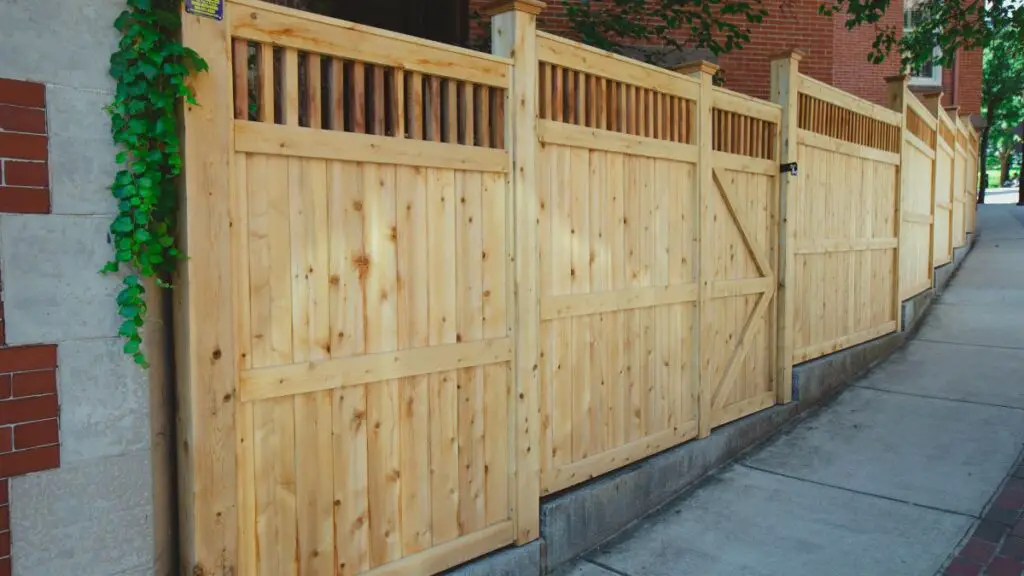
Cost Comparison of Different Wood Types
The cost is a significant factor when choosing the best wood for fencing. But remember, it’s not just about the initial cost; it’s also about the value you get over time. Let’s compare the costs of different wood types and discuss their value.
| Wood Type | Average Cost per Foot |
|---|---|
| Cedar | $15 – $30 |
| Redwood | $20 – $35 |
| Douglas Fir | $10 – $20 |
| Pine | $10 – $20 |
| Spruce | $10 – $20 |
| Cypress | $15 – $30 |
Cedar and Cypress
Cedar and cypress trees are on the higher end of the cost spectrum. You might wonder, “Why should I pay more for these types of wood?” Cedar and cypress offer excellent durability and natural resistance to rot and insects. This means less maintenance cost over time. So, while the initial cost might be higher, the long-term value is significant.
Redwood
Redwood, while being the most expensive, offers unparalleled beauty and durability. It’s a premium choice that adds significant value to your property. So, while the upfront cost is high, the aesthetic appeal and longevity it brings to your property can make it a worthwhile investment.
Douglas Fir, Pine, and Spruce
Douglas Fir, Pine, and spruce are more affordable options. These types of wood are perfect for you if you’re on a tight budget but still want a beautiful, sturdy fence. While they might require more maintenance than cedar or redwood, they can still last many years with proper care.
Remember, the best wood for your fence isn’t necessarily the most expensive one; it’s the one that offers the best value based on your specific needs and circumstances. Consider the durability, maintenance requirements, aesthetic appeal, and cost to make the best choice for your fencing project.
Related Reading: How Long Do Wood Fences Last: Guide to Lifespan
Pros and Cons of Each Wood Type
When choosing the best wood for your fence, weighing the pros and cons of each type is essential, including considerations such as resistance to Insect Infestation. Let’s delve into the advantages and disadvantages of cedar, redwood, pine, spruce, and cypress.
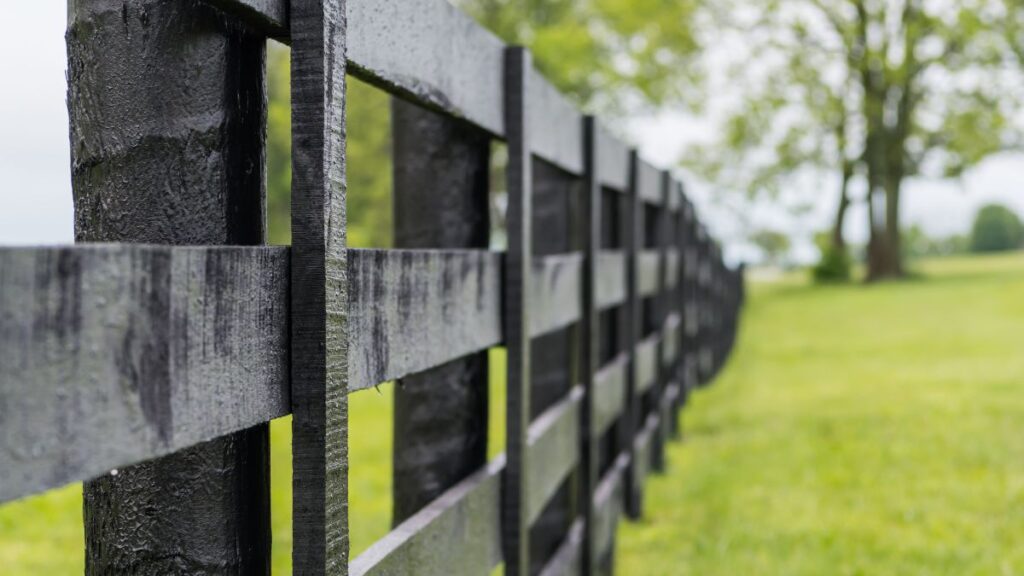
Cedar
Cedar is a top fencing choice due to its natural beauty and durability. Its rich color and grain pattern add a touch of elegance to any property. Plus, it’s naturally resistant to rot and insects, reducing maintenance costs.
However, western red cedar, although more durable than other types of wood, can turn gray over time if not properly sealed. Additionally, it is worth noting that while western red cedar offers enhanced durability, it comes with a higher price tag than other wood options.
Pros
Beautiful, durable, rot and insect resistant
Cons
Can turn gray if not sealed, more expensive
Redwood
Redwood is renowned for its stunning beauty and exceptional durability. It’s naturally resistant to decay and insects, making it a long-lasting choice.
However, redwood is the most expensive type of wood for fences. And while it’s highly durable, it can still suffer damage if not properly maintained.
Pros
Cost-effective, easy to paint or stain
Cons
Less durable, requires more maintenance
Douglas Fir
Douglas Fir is a reliable and versatile option for fencing projects, offering durability, affordability, and aesthetic appeal. Its exceptional durability, strength, and cost-effectiveness make it an ideal choice for general fencing needs, while its versatility also ensures its suitability for picket fences.
Pros
Cost-effective, decay and insect-resistant, easy to paint or stain
Cons
Less durable than other hardwoods, requires more maintenance
Pine
Pine is an affordable and readily available option. It’s easy to work with and can be treated to increase its durability and resistance to rot and insects.
However, untreated pine is not as durable as other types of wood and can be prone to warping and splitting.
Pros
Affordable, readily available, can be treated for increased durability
Cons
Untreated pine is less durable, prone to warping and splitting
Spruce
Spruce is a cost-effective choice for fencing. It’s easy to paint or stain to match your home’s exterior.
However, spruce is not as durable as other types of wood and requires more maintenance to prevent rot and insect damage.
Pros
Cost-effective, easy to paint or stain
Cons
Less durable, requires more maintenance
Cypress
Cypress is a durable and attractive option for fencing. It’s naturally insect-resistant and offers a unique color and grain pattern.
However, cypress is more expensive than other types of wood and may not be readily available in all regions.
Pros
Durable, attractive, insect resistant
Cons
More expensive, may not be readily available everywhere
Remember, when choosing the best wood for your fence, it is important to consider your needs, budget, and aesthetic preferences. It can also be helpful to seek advice from professional fence companies who can provide valuable insights and recommendations.
The Best Wood for Fences FAQs
You’ve got questions about wood fence materials, and we’ve got answers. Let’s tackle some of the most common queries.
What is the most durable wood for fences?
Cedar and redwood top the list when it comes to durability. These pressure-treated woods naturally resist rot and insects, making them a long-lasting fencing choice. Cypress also offers excellent durability and insect resistance.
How long do wooden fences last?
The lifespan of a wooden fence depends on the type of wood and how well it’s maintained. Cedar and redwood fences can last 20 to 30 years or even longer with proper care. Pine and spruce fences can last 10 to 15 years, especially when pressure-treated. A cypress fence can also last for decades with proper maintenance.
How do I maintain a wooden fence?
Maintaining a wooden fence involves regular cleaning to remove wood-destroying fungi, sealing, and repairing the damage. Sealing cedar and redwood fences every 3 to 5 years would be best to keep their color and prevent them from turning gray. Pine and spruce fences require more frequent treatment every 2 to 3 years to prevent rot and insect damage.
What is the cheapest wood for fencing?
Pine and spruce are among the most affordable options for wood fencing materials. These types of wood are readily available and easy to work with. However, they might require more maintenance than expensive wood types like cedar or redwood.
Can I use untreated wood for a fence?
While you can use untreated wood for a fence, it’s not typically recommended. Untreated wood is more susceptible to rot, insects, and weather damage. Opt for naturally resistant types like cedar or redwood if you consider using untreated wood.
Conclusion
Choosing the right wood for your fence affects your property’s aesthetics, security, and maintenance. After exploring various wood types like cedar, redwood, pine, spruce, and cypress, we’ve found that cedar and redwood offer exceptional durability, natural resistance to rot and insects, and stunning beauty.
Cypress provides similar benefits with its unique appeal, boasting a natural color and a Pleasant Scent. It is also worth considering the desired fence height when choosing cypress. Meanwhile, pine and spruce, known for their affordability, can be made durable through pressure treatment and contain high-quality wood fiber.
The best wood for your fence isn’t necessarily the most expensive but offers the best value. A well-chosen, well-maintained wooden fencing enhances your property’s appeal, privacy, and security, providing long-lasting benefits. Weigh your options and select the perfect wood for a fencing project.


